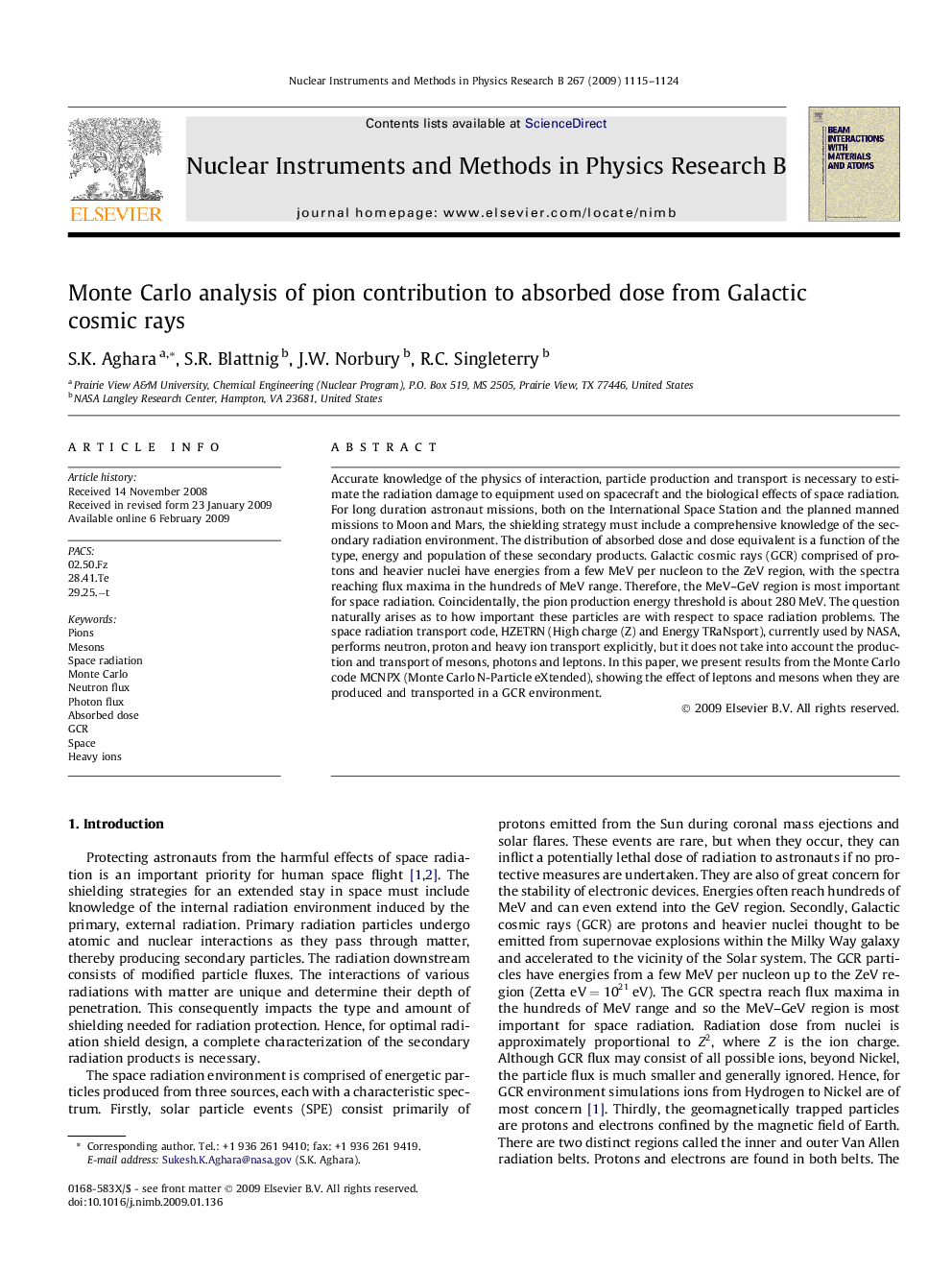| Article ID | Journal | Published Year | Pages | File Type |
|---|---|---|---|---|
| 1685372 | Nuclear Instruments and Methods in Physics Research Section B: Beam Interactions with Materials and Atoms | 2009 | 10 Pages |
Accurate knowledge of the physics of interaction, particle production and transport is necessary to estimate the radiation damage to equipment used on spacecraft and the biological effects of space radiation. For long duration astronaut missions, both on the International Space Station and the planned manned missions to Moon and Mars, the shielding strategy must include a comprehensive knowledge of the secondary radiation environment. The distribution of absorbed dose and dose equivalent is a function of the type, energy and population of these secondary products. Galactic cosmic rays (GCR) comprised of protons and heavier nuclei have energies from a few MeV per nucleon to the ZeV region, with the spectra reaching flux maxima in the hundreds of MeV range. Therefore, the MeV–GeV region is most important for space radiation. Coincidentally, the pion production energy threshold is about 280 MeV. The question naturally arises as to how important these particles are with respect to space radiation problems. The space radiation transport code, HZETRN (High charge (Z) and Energy TRaNsport), currently used by NASA, performs neutron, proton and heavy ion transport explicitly, but it does not take into account the production and transport of mesons, photons and leptons. In this paper, we present results from the Monte Carlo code MCNPX (Monte Carlo N-Particle eXtended), showing the effect of leptons and mesons when they are produced and transported in a GCR environment.
